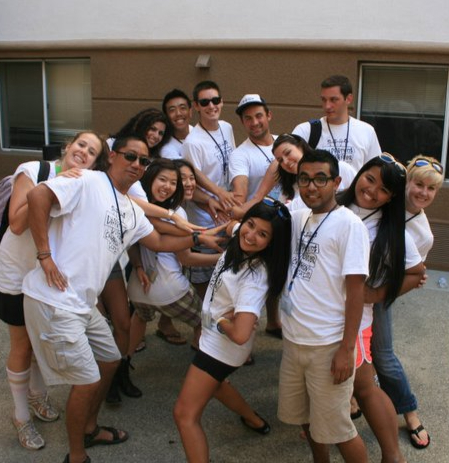Types of Activities
- Leadership Inspirations Staff

- May 3, 2018
- 4 min read

Know the different types of facilitation activities and the best times to use them with your group
Activities are tools that act as a valuable form of experiential learning. If you’ve ever searched for “team building activities” online, you’ve probably been overwhelmed by the sheer volume of activities that exist. It can be hard to know what you are looking for or where to begin! This ‘paralysis by analysis’ can sometimes lead you to pick an activity that is not appropriate for your group or doesn’t help the group get closer to its goals.
When faced with choosing an activity, it can be helpful to narrow down your options. One of the ways that you can do this is by Activity Type. We classify activities into six different categories for facilitators: Appreciation & Bonding Activities, Energizers, Experiential Activities, Games, Getting to Know You Activities, Icebreakers, and Mixers. Participants may call any of these ‘team building activities,’ but they are different and have different purposes. It’s important to be precise when choosing an activity so that the activity matches the desired learning outcomes you have for your group. You may find that many activities fall into several of these categories, and that’s okay! These categories are simply meant to be a framework that helps facilitators narrow down options so that you can choose the right activity for you and your group.
Types of Activities:
Appreciation & Bonding Activities
Appreciation and bonding activities allow group members to form closer relationships with each other and the group as a whole. These activities are typically higher risk for participants and require trust and a safe space for sharing to be effective.
Examples: Appreciation Taps, Coat of Arms
Energizers
Energizers allow you to manipulate the energy in the room. When used effectively, they can increase or lower the energy. This means you can take a group’s low energy and make it high for a brainstorming session, or take high energy and bring it down for an important meeting. Energizers are ultimately tools that help to shift the focus of your group so that they are better prepared for whatever it is that you have planned next.
Examples: 3, 2, 1 Check In and Check Out, Fast Pass
Experiential Activities
Experiential activities help the group learn a lesson or solve a problem. These activities can be any kind of activity or structured leadership lesson because they are characterized by a debriefing discussion afterwards. Experiential activities require trust and buy-in from group members to be successful and should not be attempted before the group has had a chance to get to know each other through icebreakers or mixers first. The benefits of experiential activities are that they can be completed or ‘solved’ in a variety of ways depending on the group and the instructions given. Different groups can, and often will, participate in the same experiential activity very differently. This means that each group will realize leadership lessons that are unique to them and their own group dynamic. Not all groups will be successful in completing experiential activities, and that’s okay as long as they get to discuss why. The challenges and lessons that come from the activity are key during the exercise and should be explored during a debrief. Really any activity can be used as an experiential activity as long as the facilitator is intentional in their purpose for the activity and the learning outcomes discussed in the debrief.
Examples: Stepping Stones, Forks, Knives, Spoons
Games
Games are competitions with clear winners and losers. You can win a game, but you can’t win any of the other kinds of activities included here. Friendly competition can be a helpful tool for connecting and motivating groups. You do not need to debrief a game or relate a game to any sort of learning outcome, games are just for fun!
Examples: Caterpillar, Family Feud, This Game is Really Fun
Getting to Know You Activities
Getting to know you activities are designed for participants to learn things about themselves and their group members. They are great to implement at the forming and norming stages of a group and assist in developing stronger bonds at varying risk levels.
Examples: Pie Chart Life, Ask Me About It
Icebreakers
Icebreakers are used to break down barriers between people and help people get to know each other. The benefits of icebreakers are that they are low risk for all participants. They are a great way for a group to introduce themselves and interact with one another in an active and engaging way. You can also use icebreakers with established groups as a way to jump start a new meeting or session.
Mixers
Mixers are used to introduce larger groups of people to each other. They are a combination of icebreakers and energizers. These activities are extra large group events where people are meeting and interacting with one another. You can do these activities with hundreds of people and often the goal is to meet as many people as possible.
Examples: Rock, Paper, Scissors Posse, Mingle
Once you’ve decided what type of activity you are looking for, you can use the advanced search function on our Activities Database to sort activities by Activity Type. For other considerations on how to choose an activity, check out more useful content like the Group Development Model and Adjusting to Group Size.

Leadership Inspirations, the creators of TGIRF, truly believe this game is really FUN! Like, REALLY fun. 🤩 Since 2006, they have worked relentlessly to find the best ways to mix fun and learning. With their army of highly skilled facilitators, they have built a proven track record for providing engaging, interactive, research-based programming for thousands of students, educators, athletes, and professionals. Click HERE to learn more about these awesomely awesome professionals with backgrounds in education, leadership, organizational development, counseling, psychology, and more...

Comments